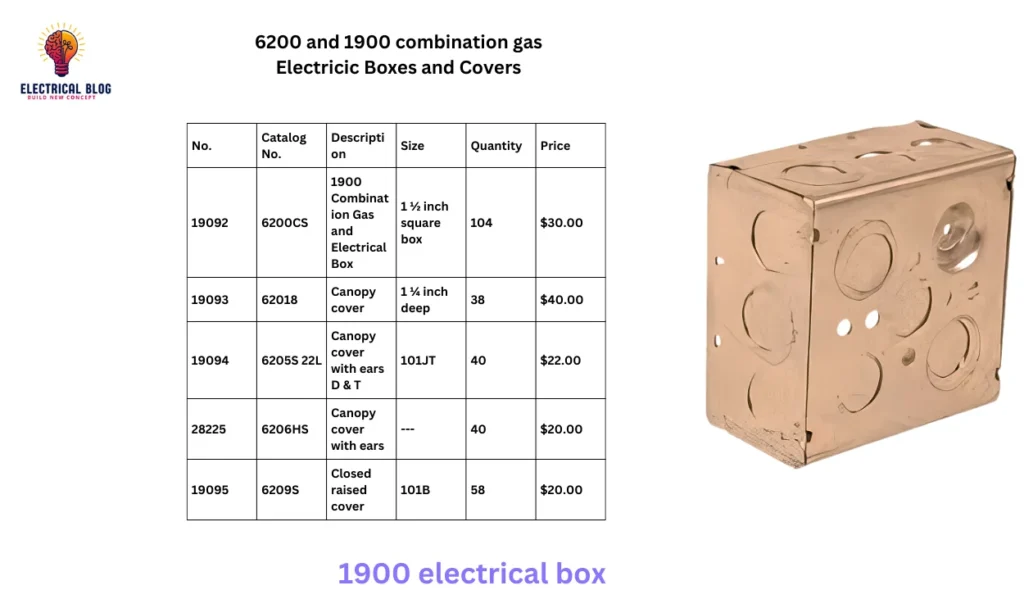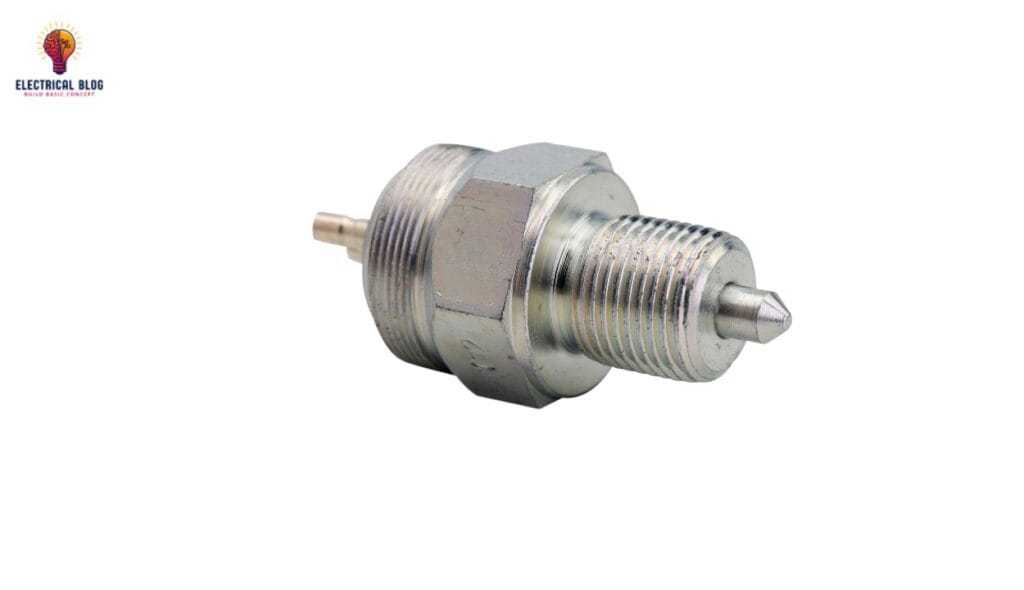Introduction to the 1900 Electrical Box
The 1900 Electrical Box is a higher volume box that provides a suitable solution for handling bulky wiring devices and heavy cables. It is commonly installed in walls and ceilings, ensuring safety and durability. With its designed structure, it supports various applications in electrical setups.
This square box is widely used for lighting fixtures, receptacles, and switches, making it a standard choice for professionals. The 1900 Deep Electrical Box is ideal for MC, MCI, AC, and HCF cables, offering flexibility in installation. It is safe for circuits up to 600 volts and is often used without a bonding jumper.
What is a 1900 electrical box?
A 1900 Electrical Box is a standard 4-inch square electrical switch box that is commonly used when a simple switch box is not big enough. It is built to hold multiple wires securely, and its depth makes it ideal for different setups. With a patented design, it allows for easy wire removal, making installation smoother. Whether you’re working with gas lines or electric wiring, this combination box provides a reliable solution.
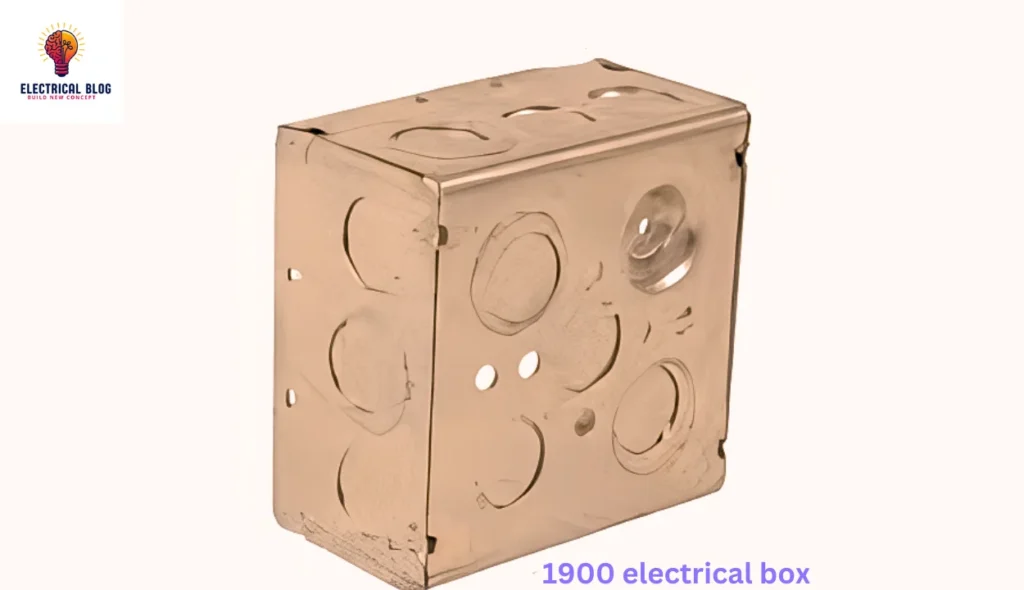
1900 Electrical Box Dimensions
The 1900 Electrical Box is a square box with precise dimensions of 4 x 4 inches (4″ x 4″). It is constructed from welded steel, ensuring durability in various circuits. The standard version is 1½ inches deep, while the 1900 Deep Electrical Box provides extra space at 2⅛ inches deep for more complex wiring needs.
It features knockouts on the sides and bottom to fit conduit sizes like 1.5 inches, making it suitable for installations above or below 250 volts. The slotted screw heads simplify mounting, and a bonding jumper is not required for certain electrical applications.
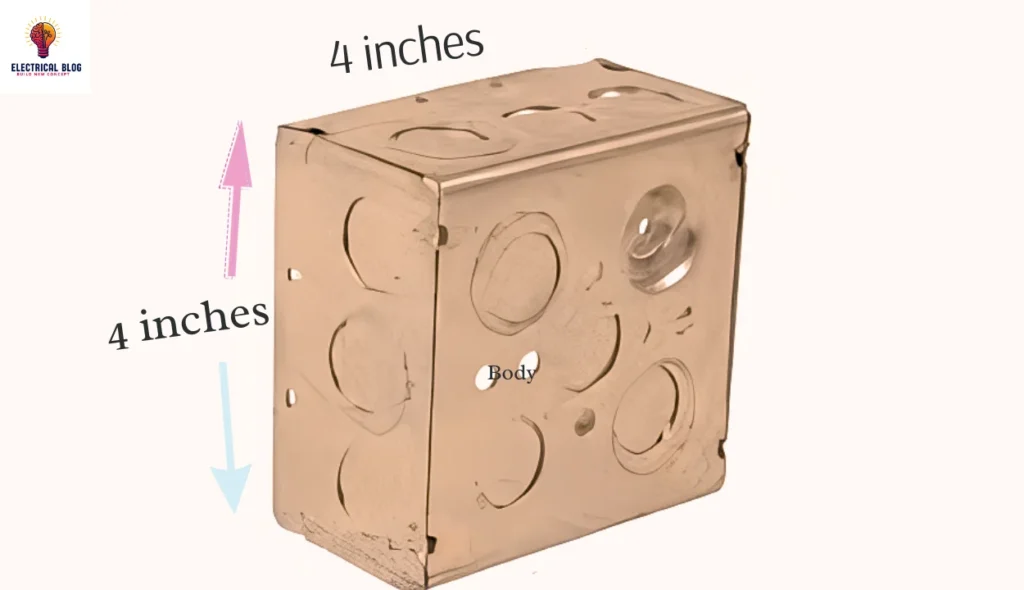
Design and Features
The 1900 Deep Electrical Box can hold twelve 10 AWG (American Wire Gauge) wires, thanks to its 2⅛ inches depth. It features a square box shape that supports various connector types and can be reused when needed.
Components of a 1900 electrical box
Knockouts:
Knockouts are pre-punched holes in a 1900 electrical box. These knockouts are easy to remove for adding electrical conduit or cables. They vary in size, usually from an inch to an inch, to fit different wiring needs. Simply use a screwdriver or knockout tool to punch out the needed size for a clean opening. This keeps the wires secure and organized. It also protects the system in the metal box.
Grounding Provisions:
Proper grounding is vital for electrical safety and NEC compliance. The 1900 box usually has a grounding screw or clip. Typically, the screw is inside the box. It securely attaches the ground wire, directing stray current safely. This action protects the system and prevents shocks and fires. Hence, grounding is essential in installation.
Covers and Accessories:
The 1900 box works with various covers and accessories. This makes it adaptable for different setups. Flat covers suit simple junction boxes. Raised covers are for devices like outlets or switches. Mud rings give a neat finish when the box is behind drywall or plaster. Mounting brackets secure the box to surfaces. Clamps hold cables or conduit. These components ensure safe, compliant installations and offer flexibility.
History Behind the Name: 1900 Box
Many assume the 1900 Box got its name because of its size, measuring 19 cubic inches. However, in 1917, the central electric supply catalog referred to it as 1900 combination gas and electric boxes. The Bossert Company assigned the part number nearly a hundred years ago, making it widely recognized.
Old documents, including a label print, mention the 1900 Electrical Box, along with accessories like the 1900 Gas and Electrical Box Cover and the 1900 Combination Gas and Electrical Box Cover. This historical naming has remained unchanged almost ever since.
Applications of the 1900 Electrical Box
The 1900 Electrical Box is suitable for a wide variety of applications, especially when bulky wiring devices and heavy cables require a higher-volume box.
The 1900 Deep Electrical Box is designed for the installation of MC, MCI, AC, and HCF cables, making it ideal for commercial and industrial setups.
It is commonly installed in walls and ceilings to support switches, lighting fixtures, and receptacles efficiently.
This box works well with flexible armored cable, ensuring durability in demanding environments.
It is safe to use in circuits of up to 600 volts without needing a bonding jumper for grounding.
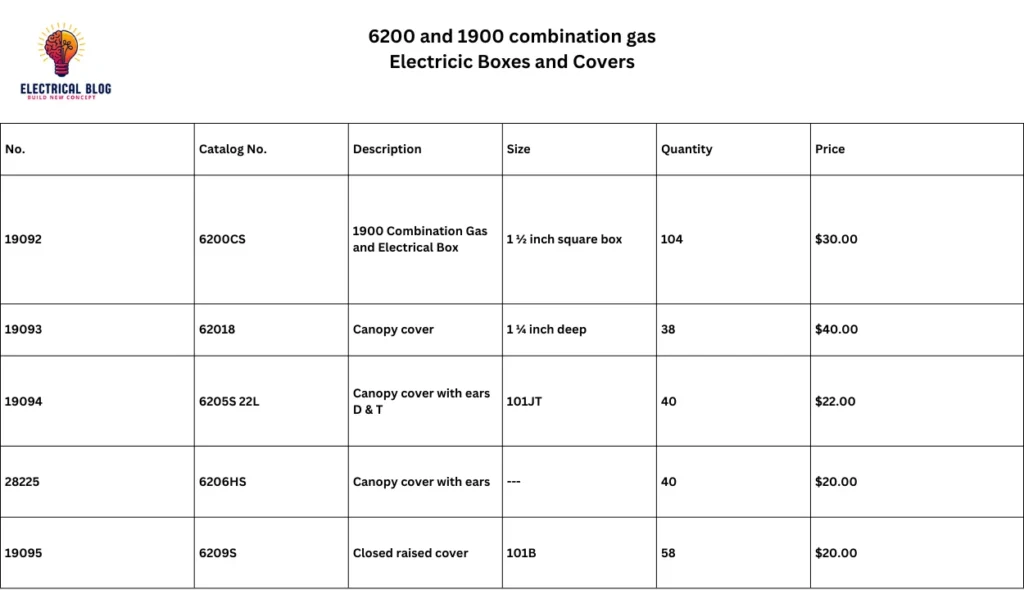
Benefits of Using a 1900 Electrical Box
- For enhanced safety, the 1900 Gas and Electrical Box Cover and the 1900 Combination Gas and Electrical Box Cover ensure a secure seal. These covers match the design of the box, providing a tight fit for added durability.
- The 1900 electrical box, made of welded steel, is highly durable. This makes it perfect for long-term use. It resists corrosion and wear. So, it can endure harsh conditions. This prolongs the electrical system’s life.
- The 1900 electrical box suits various wiring and cable types. Its flexibility makes it popular among electricians and engineers. They use it for projects ranging from homes to large buildings.
- The 1900 electrical box is designed for easy use. It has slotted screw heads and simple knockouts. These features make installation, maintenance, and upgrades easier. As a result, they reduce downtime and labor costs.
- The 1900 electrical box meets all safety and performance codes. It works without a bonding jumper in circuits up to 600 volts. This ensures it meets industry standards, giving installers and users peace of mind.
Conclusion
The 1900 Electrical Box is a suitable choice for various applications, providing a higher volume box for bulky wiring devices and heavy cables. Its designed structure ensures easy installation in walls and ceilings, supporting switches, lighting fixtures, and receptacles. With the 1900 Deep Electrical Box, professionals can safely work with MC, MCI, AC, and HCF cables, making it a reliable option for circuits up to 600 volts without needing a bonding jumper.
Read more:

